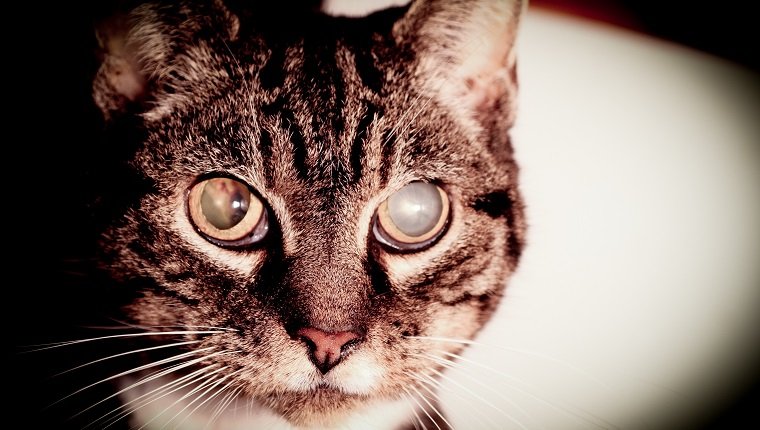If you’ve noticed a change in your cat’s eye color or their vision seems impaired, you may suspect cataracts of being the cause.
Cataracts are sometimes viewed as a condition that only affects the eyes of seniors, but this is not the case with cats. In fact, age is generally not the main factor when cats develop them, and it’s more rare for cataracts to appear in cats than in dogs.
You should always take your cat to the vet if you notice abnormalities when it comes to their eyes. Here’s what you should know about cataracts in cats.
What Are Cataracts?
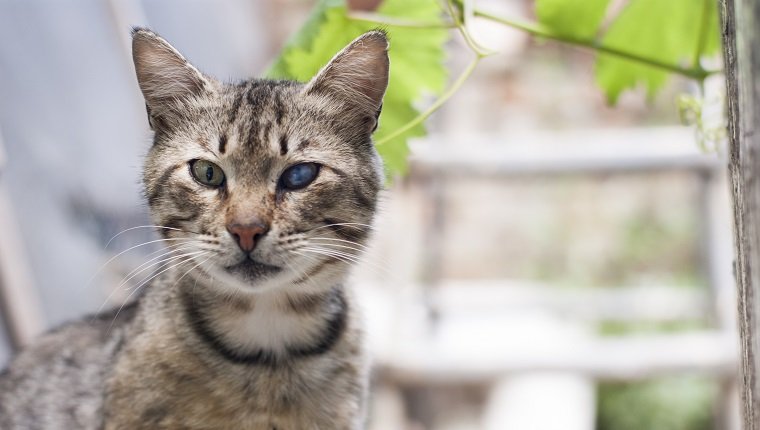
Cataracts are cloudiness in one or both of cats’ eyes that causes the lens to lose transparency. This can result in partial or complete opacity in the lens, preventing light from passing to the retina.
Vision can be impaired or lost completely due to this process.
Cataracts are easy to confuse with nuclear sclerosis, a normal change in the eye color of older cats over seven years of age. This change can make the lens appear white, but doesn’t affect vision.
If you notice a concerning change in eye color, your vet will be able to find out if it’s due to nuclear sclerosis.
Symptoms Of Cataracts In Cats
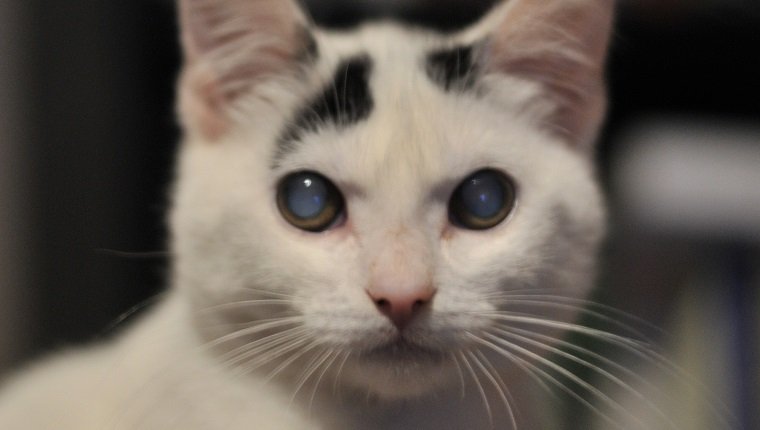
If you believe your cat might be developing cataracts, here are some signs you should look out for:
- A blue, gray, or white layer in one or both eyes
- Changes in eye color or the size and shape of pupils
- Watery eyes
- Clumsiness or unusual walking habits
- Sudden reluctance to jump on furniture or climb stairs
- Squinting
- Trouble recognizing familiar people
- Difficulty judging distance
- Impaired ability to see in the dark or dimly lit areas
Causes Of Cataracts In Cats
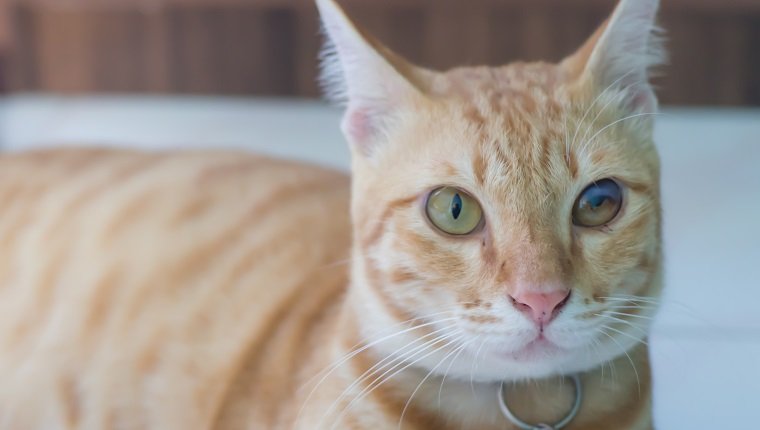
There are many things that could cause a cat to develop cataracts.
Heredity is a major factor. Certain cat breeds are predisposed, including Persians, Birmans, Himalayans, and Domestic Shorthairs. If your cat is one of these breeds, check their eyes frequently for changes, and consult a vet or eye specialist if you see signs of cataracts.
It’s most common for cats to develop them as a result of inflammation in the eye, which can come from injury or infections.
Cats with diabetes mellitus may get cataracts, though you would likely notice other concerning symptoms such as increased thirst, frequent urination, and weight loss.
Cats with unusually low calcium in the bloodstream, a condition known as hypocalcemia, may also get cataracts.
Age plays a factor, as well, although not as strong a factor as heredity or inflammation due to eye injury or infection. Senior cats may be more likely to develop cataracts. Poor nutrition as a kitten can also lead to cataracts later in life.
Some of the rarer causes include electric shock or exposure to toxic substances such as dinitrophenol or naphthalene.
Treatments & Prevention For Cataracts In Cats
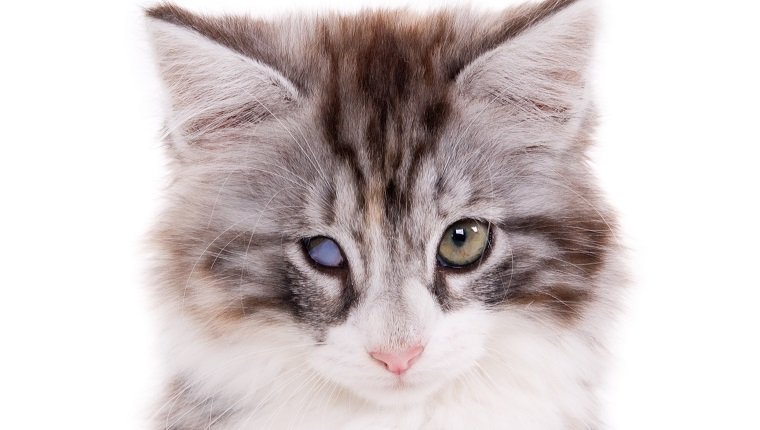
Treatment of feline cataracts depends on the cause. Often the goal of treatment is not to restore sight, but prevent secondary problems like uveitis, glaucoma, and retinal detachment.
The only way to remove them completely is through surgery; although, there are other options that can prevent them from getting worse.
Eye drops to prevent inflammation and secondary complications might be prescribed by your veterinarian. If the cataracts are the result of a dietary deficiency, your vet may talk to you about making adjustments in your cat’s diet to compensate.
Surgery
There are various forms of surgery to remove cataracts.
Phacoemulsification is a process that involves liquefying the eye lens with ultrasonic waves and replacing fluids with a balanced salt solution. It is shown to have a 90 percent success rate in cats. An intraocular lens may be implanted during surgery to prevent farsightedness.
Other forms of surgery include extracapsular lens extraction and intracapsular lens extraction.
Prevention Is The Best Medicine
The best option is to prevent cataracts by reducing exposure to the causes of the condition. Routine eye exams from your vet can often catch problems before they get worse. Staying up-to-date on vaccinations can help prevent viral infections that affect the lens of the eye.
Maintaining a proper diet from kittenhood and avoiding exposure to toxic substances will also go a long way in preventing cataracts from developing.
Because many cataracts form as a result of eye injury, preventing your cat from fighting with other cats or getting into situations where eye injury is a possibility also helps.
Going Without Treatment
Many cat parents opt to not treat cataracts since cats tend to adjust well to impaired vision or blindness, relying on their other senses to function. You should discuss this option with your vet.
Sometimes your vet will still want to treat for secondary complications. Certain cats are not healthy enough for surgery, as well. If this is the case, there are still treatment options that can make your cat more comfortable. Discuss these options with an eye specialist before you make any decisions.
Has your cat ever developed cataracts? How did you go about treating them? Let us know in the comments below!
